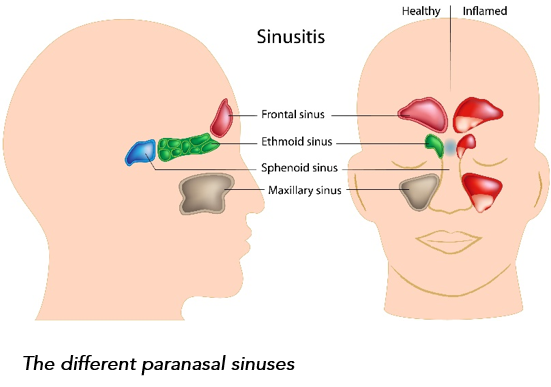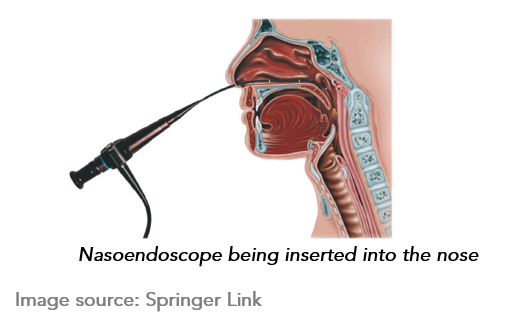What are Sinuses?
Sinuses, or more accurately, paranasal sinuses, are air-filled cavities surrounding the nasal cavity. Humans have four groups of sinuses within their face, on each side of their nasal cavity. They are located:
Above the eyes (frontal sinus)
In between the eyes (ethmoid sinus)
Below the eyes (maxillary sinus)
Behind the eyes (sphenoid sinus)

The lining of the nose produces mucous. This lining also has tiny hair-like structures that help move the mucous from the sinuses into the nose. The mucous in the nose can then be blown out, swallowed into the stomach or coughed out as part of phlegm.
What are the Functions of the Paranasal Sinuses?
As they are air-filled, they are thought to reduce the weight of the human head. The sinuses also produce mucous that:
Traps inhaled bacteria and foreign objects
Changes the temperature of inhaled air
Enhances the sound of human voice.
What is Rhinosinusitis?
Rhinosinusitis, also known as sinusitis, is the inflammation of the lining of the nose and sinuses. Rhinosinusitis is further divided into:
What Causes Rhinosinusitis?
Rhinosinusitis are caused by various factors.
1. Blockage of Sinuses Drainage Pathway
The sinuses become inflamed and infected when the drainage pathway is blocked. The stagnant mucous in the sinuses can get infected next, resulting in the symptoms of rhinosinusitis.
Additionally, some people naturally have narrow drainage pathways. This makes their drainage pathway more prone to blockage.
2. Deviated Nasal Septum
A nasal septum is the bony-cartilage in the nose that separates the nostrils. A deviated nasal septum is a bent or crooked septum, causing one nostril to be larger than the other. In severe cases, it can block the sinus passage. This can occur as a result of trauma or inborn in some patients.
3. Existing Allergic Rhinitis
People with severe allergic rhinitis (sensitive nose) may have congestion and swelling in the nose, which causes rhinosinusitis.
4. Ineffective Removal of Mucous From Nose
Rhinosinusitis also occurs when the lining of the nose and sinuses are ineffective in moving mucous out of the nose.
5. Poor Immune System
In addition, patients with poor immune system have a higher risk of chronic sinus infection.
What are the Symptoms of Rhinosinusitis?
The symptoms of rhinosinusitis include:
Blocked nose
Discoloured nasal discharge
Backflow of mucous into the throat
Facial pain or pressure
Decrease (hyposmia) or loss of smell (anosmia)
In acute rhinosinusitis, some patients may experience fever. Other associated symptoms include headache, ear pain, ear blockage and lethargy.
How is Rhinosinusitis Diagnosed?
Your ENT surgeon will review your symptoms and perform a thorough physical examination which includes flexible nasoendoscopy.
A nasoendoscope is inserted into the nose and throat to look for signs of rhinosinusitis. The is done after the nose is numbed and decongested with a local anaesthetic spray.
The procedure takes less than two minutes and often, only mild discomfort is felt. Clinical findings of rhinosinusitis include mucopus, swelling of the lining of the nose and nasal polyps.

How is Rhinosinusitis Treated?
The treatment of rhinosinusitis include medical and surgical options. In most cases, rhinosinusitis can be treated with medications.
The following medications may be prescribed by your ENT surgeon:
Antibiotics to treat the bacterial infection
Nasal irrigation to wash out the mucous and pus
Intranasal steroid spray to reduce inflammation of the sinuses
Decongestants to relieve nasal congestion
Painkillers to reduce headaches and facial pain
